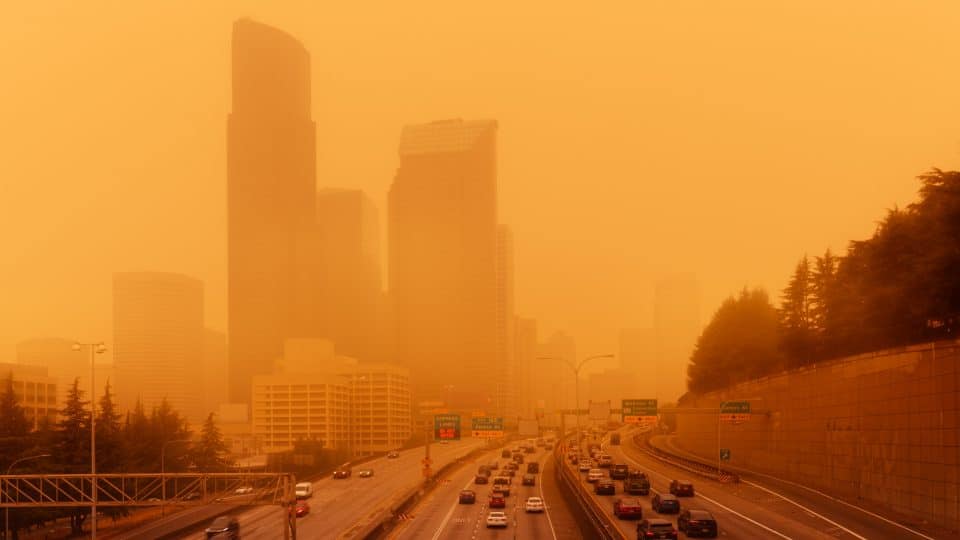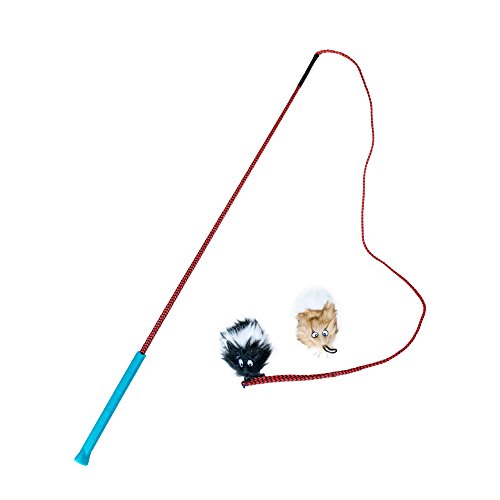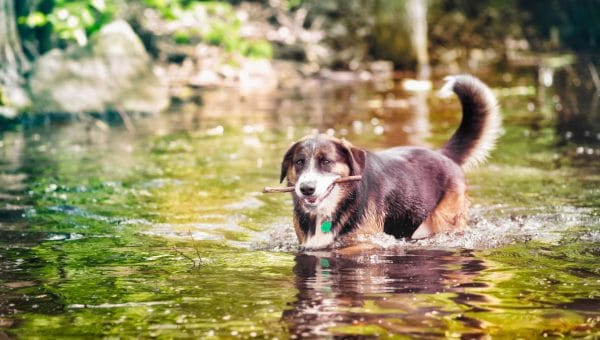- This post contains affiliate links. Read more here.
- Not a substitute for professional veterinary help.
This article was reviewed by Dr. Sarah Nelson, DVM, on 9/12/2022.
As the hottest, driest days of summer roll around, seasonal wildfire smoke becomes an issue in many parts of the United States—raising questions about the health and safety implications for not just people but pets, too. Smoke inhalation in dogs is a problem as serious as it is for humans, which makes it a good idea to familiarize yourself with some tips, tricks, and signs to watch out for in your pup.
Luckily, many of the same precautions we’d take for ourselves apply to our furry family members. Read on for advice and tips if you (and your dog) live in an area affected by wildfire smoke.
Safety Tips for Dogs When the Air Quality Is Poor
The biggest danger to your pup comes from fine particles which can reach deep into the lungs and cause a variety of health issues, including eye irritation and chronic respiratory issues. The first step in keeping your dog safe from smoke inhalation is to know when to stay inside.
During fire season, make a habit of watching the air quality in your area. If it reaches levels you wouldn’t want to breathe, then it’s time to keep your dog inside, too.
Other precautions include:
- Closing all windows
- Using air conditioning or an air purifier, if possible, to help filter the air
- Keeping potty breaks short
- Avoiding long walks and other prolonged outdoor exercises
- Keeping your dog well hydrated
- Watching for signs of respiratory stress and eye inflammation—and if your pet shows symptoms, seeing a veterinarian immediately
Which Dogs Have More Risk for Respiratory Distress From Smoke Inhalation?
Just as young children and senior citizens are more at risk for harm from breathing wildfire smoke, so too are certain dogs more likely to experience acute illness as a result of poor air quality. These include:
- Any dog with asthma or bronchitis
- Brachycephalic dogs like Bulldogs, Boston Terriers, and Pugs
- Puppies and senior dogs
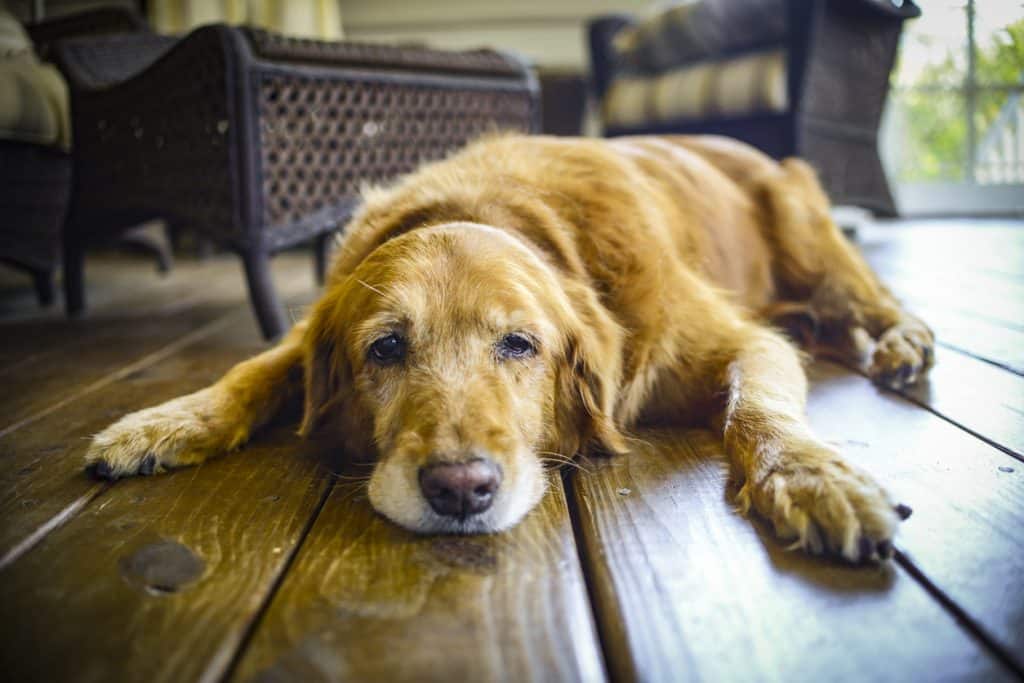
iStock/stonena7
Signs of Mild Smoke Exposure
These signs may be more severe if your dog has one of the predisposing factors mentioned above. Don’t hesitate to take your dog to the vet if you’re concerned or your dog appears to be in distress.
- Increased or chronic coughing
- Increased sneezing
- Red, squinty, or runny eyes
More Severe Side Effects of Smoke Inhalation in Dogs
While rare, these symptoms are particularly alarming. They’re more likely to show up if your dog is inhaling vast quantities of smoke or is in very close proximity to a fire.
- Disorientation or confusion
- Fainting
- Seizures
- Difficulty breathing
- Weakness or lethargy
- Uncoordinated walking/inability to stand
- Excessive salivation
- Prolonged open-mouthed breathing
- Swelling of the mouth or upper airway
- Vomiting or loss of appetite
If your pet is experiencing any of these symptoms, especially breathing troubles, see your veterinarian or visit an emergency vet right away.
Should My Dog Be Wearing a Mask?
Some pet parents have turned to air masks for their dogs to protect them from everything from smog and wildfire smoke to COVID-19, but in general, masks are best for severe situations such as being in direct proximity to a wildfire—and in order to be effective, they need to be dog-specific.
Poorly fitted masks can prevent your dog from panting, which may increase their rise of heat related injuries such as heat stroke. Dogs should only wear masks for short periods of time, so be sure to check the manufacturer’s recommendations about how long the mask can be safely worn and how often the filters need to be replaced.
Masks are not recommended for brachycephalic dogs, senior pets, or dogs with underlying respiratory issues such as asthma because they may struggle to breathe while wearing one.
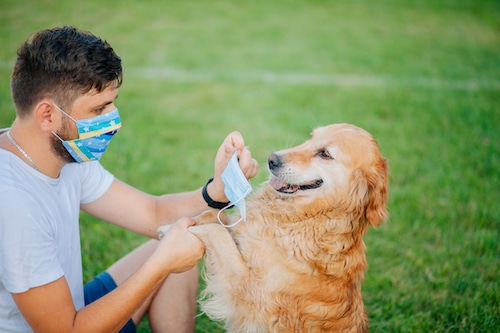
Nevena1987 via iStock
What About When Your Dog Has to Go Outside?
When circumstances force the occasional trip outside, keep potty breaks short and avoid long walks and other prolonged outdoor exercises.
It’s also important to give your pet a thorough check once you’re back indoors. Vets recommend wiping their fur down, paying particular attention to their mouth and eyes, to remove ash or smoke particles.
Indoor Activities to Keep Your Dog Busy
If you live in an area affected by wildfire smoke, it’s a great time to focus on indoor activities. You could brush up on your dog’s training, try enrichment games, or get help from a local pet sitter or in-home daycare to keep your dog busy in the absence of outdoor walks.
Indoor “exercise” for your dog can include:
- Hide-and-seek
- Puzzle toys like the classic KONG or a treat dispenser
- Fetch and tug
- Teaching tricks
- Brushing up on basic training
If you’re feeling ambitious, or if your dog is of the herding variety (like Cattle dogs, Shepherds, and Collies), these activities take indoor games to the next level:
- Flirt pole sessions
- Nosework
- Obstacle courses
- Indoor agility
- Indoor doggy exercise equipment
The Bottom Line
Stay safe out there! When the air quality is poor, keep your pup indoors as much as possible and watch for the signs of excessive smoke inhalation in dogs. Extra couch snuggles with your pet are never a bad idea, either. Just saying.
